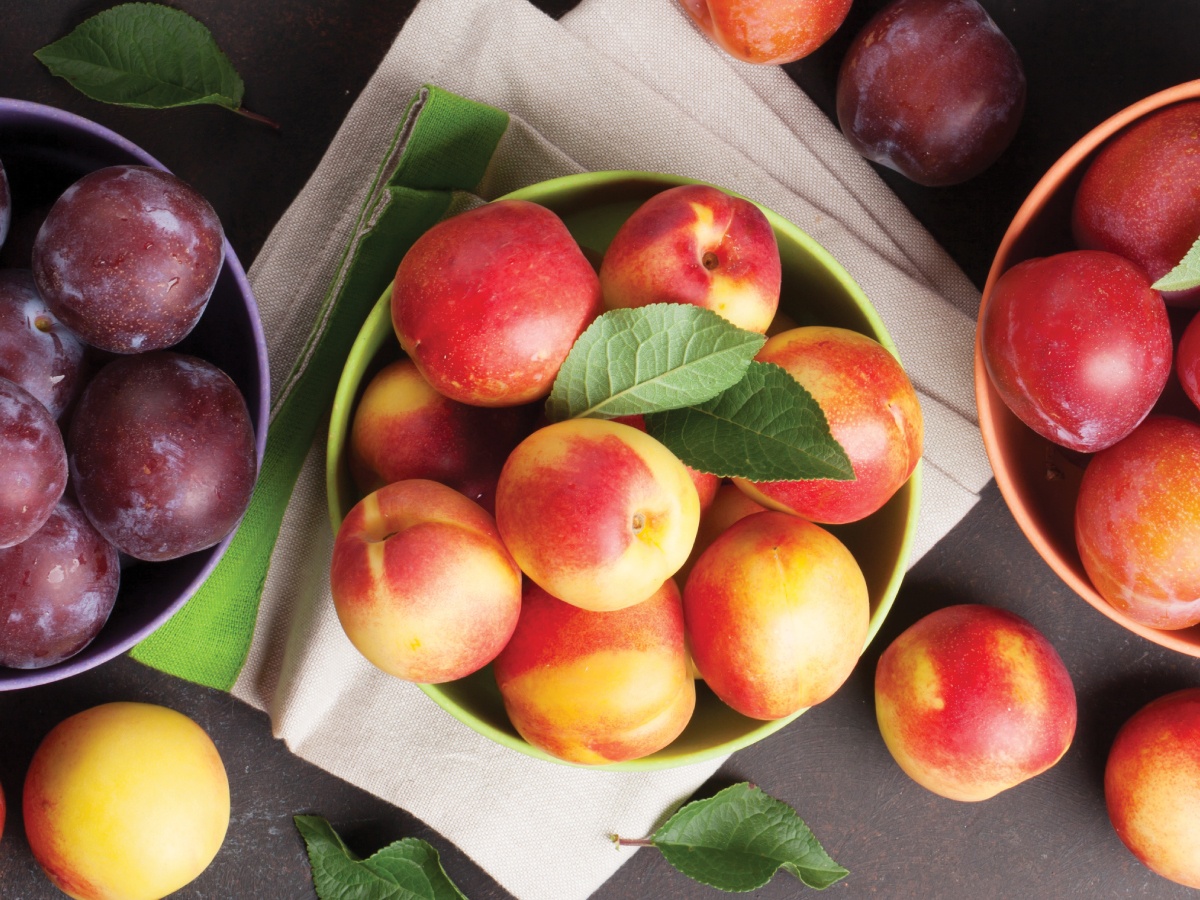Let’s Start at the Beginning…
At Oliver’s Markets, our reputation for top quality produce is no accident. Our roots in the produce business extend back over forty years to the days when Oliver’s founders Steve and Ruth Maass made their living selling produce at a roadside stand in San Francisco. Because they provided great produce and service, and they educated their customers about their products, their stand became known far and wide as the best place to buy produce in the area.
Today at Oliver’s, we work to continue this tradition, offering our customers quality produce and as much information as possible, so here we go!
In botany, stone fruits are technically called drupes. The term ‘stone fruit’ comes from the stone-hard covering that you find surrounding the single large seed found at the fruit’s core. The stone supports the fruit while it hangs from the tree branch by its stem by providing a way for nutrients to pass from the tree to the growing fruit.
Picking the Perfect Stone Fruit
1. The Nose Knows
One of the best indicators of ripeness is aroma, especially for peaches! Take a whiff where the stem would be, it should smell sweet and fragrant, but not malty or fermented.
2. Get a Feel for It
The best stone fruit is not rock-hard, but gives just slightly to a gentle squeeze. If the fruit it too hard and you are not eating it for a couple days, put it in a paper bag when you get home, in a few days’ time it will soften and be ready to eat!
3. Live Colorfully!
Vibrant, saturated colors are key when choosing stone fruit. Peaches and nectarines should have no green or wrinkly patches.
Keeping Your Stone Fruit in Peak Condition
Keep stone fruits uncovered at room temperature, or on a sunny windowsill for a day or two. If they are ripe and start getting soft before you are ready to eat them, put them in the crisper drawer in the fridge to prolong their life for a couple more days. Be careful storing them, as they bruise easily.
Maximum Stone Fruit Enjoyment
The possibilities of what to do with stone fruit are endless. The easiest way to enjoy them is on their own. There is nothing better than biting into a fresh, ripe peach or nectarine and trying to keep the sweet juice from dribbling down your chin. Slicing up perfectly ripened stone fruit and adding a bit of sugar and/or liqueur (Cointreau, for example) to serve atop vanilla ice cream is a sure confirmation that summer has arrived!
You can also use peaches, nectarines, plums and cherries in pies, compotes, preserves, butter, and even cocktails. Check out this Rustic Peach Gallette, Summer Plum Cobbler or Cherry Clafoutis. You can also use them as an unexpected addition to savory dishes, such as this Nectarine Salsa, or Grilled Peach Crostini. Or how about in a salad, like this Nectarine and Prosciutto Salad?
No matter how you slice it, stone fruits are here to kick off the summer season with all of their deliciousness! Enjoy them while they are here, and keep that summer feeling going by freezing your extra stone fruits using our tips below.
Freezing Stone Fruits
- Cut wax or parchment paper to cover a baking sheet, to prevent sticking.
- Slice the fruit into similar sized slices to ensure the fruit will freeze equally.
- Carefully place the fruit slices onto the wax paper lined baking sheet. Do not let the fruit touch each other.
- Place the baking sheet into the freezer and allow to freeze for about 24 hours or until fruit slices are completely frozen.
- Remove fruit from freezer and place into high-quality freezer bags, remove as much air as possible before sealing the bag. Place the bags into the freezer.
- Store the bag of frozen fruit in the freezer and enjoy summer-ripe Stone Fruit all year long!
Happy summer!


Comments
Add a commentI would appreciate knowing if the peaches are freestone or clingstone.
Thanks.
Comment by Penny on June 7, 2023 at 10:10 am
Thank you for your question. Our first crops to arrive are cling peaches. Freestone peaches will come later in the season, most likely late July.
Comment by Sara Cummings on June 7, 2023 at 10:45 am